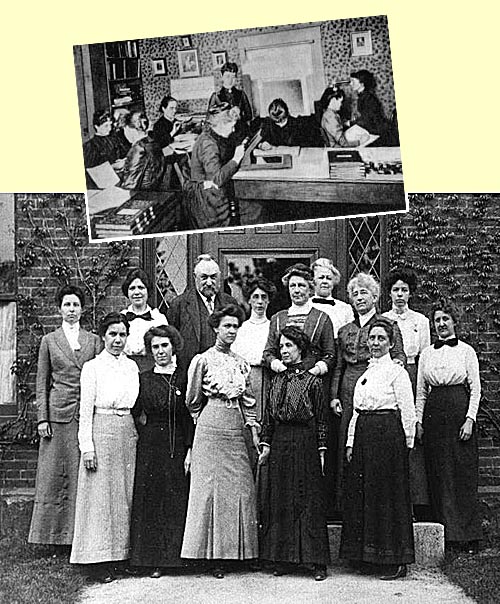The Harvard Computers
by Andrew Boyd
Today, Pickering's Harem. The University of Houston's College of Engineering presents this series about the machines that make our civilization run, and the people whose ingenuity created them.
Astronomer Edward Charles Pickering had a problem. He headed the Harvard Observatory in the late 19th century, and he needed to catalog the spectra of stars. Spectra are like fingerprints. A star's spectrum contains information about how hot it is, what it's made of, how luminous it is, and how fast it's moving. Helium was discovered in the spectrum of the sun before we knew the gas existed. Helium got its name from the Greek word for sun, helios.
Pickering had money to assemble the catalog of spectra from the estate of the late Henry Draper. Draper was an accomplished amateur astronomer who, in 1880, became the first person to photograph the spectrum of a star. His fascination with star spectra led his widow to establish the Henry Draper Memorial Fund at the Harvard Observatory. Pickering had access to the fund, but he needed someone to do the cataloging work. He needed cheap, educated, dependable labor. So he hired women.
The decision wasn't surprising by that time. Women's colleges had established themselves in the years prior to Pickering's project. The Harvard Annex, later to become Radcliffe, was one such school. Women were making progress in their struggle to gain educational equality with men, but they had far to go. The women Pickering hired were referred to as "Pickering's Harem." They were also called the "Harvard Computers" since their jobs required detailed mathematical calculations.

The jobs were tedious. They were repetitive. They required endless examination of photographic plates. But they also gave the women a chance to immerse themselves in data. And the women made good use of this opportunity.
Williamina Fleming discovered the famous Horsehead Nebula, and published papers on her findings. She also developed an early star classification scheme. Henrietta Leavitt observed stars that change in brightness. She then discovered how to use them to measure much longer celestial distances than ever before. Her measurement technique became the ""yardstick to the universe." Annie Jump Cannon was known for her lightening speed. She classified over two hundred and twenty-five thousand stars in her lifetime, at rates of up to three hundred per hour. She also extended earlier schemes for classifying stars. Her method, now known as the Harvard Classification Scheme, is still used today. Astronomy students remember the seven major star classes from the first letters of the words in the phrase "Oh be a fine girl – kiss me!" Cannon went on to become the first elected female member of the American Astronomical Society.
Today, it's hard for us to appreciate what women had to overcome only a century ago. Women were meant to be wives and mothers, not scientists or engineers. Fleming, Leavitt, and Cannon were allowed to participate in scientific research, but only in a limited way. They didn't pursue their own research. They completed tasks assigned by others. They were not considered the equal of the men. But they seized an opportunity, and in doing so quietly helped pave the way for future generations.
I'm Andy Boyd at the University of Houston, where we're interested in the way inventive minds work.
Edward Charles Pickering. Accessed March 25, 2008, from Wikipedia
Harvard Computers. Accessed March 25, 2008, from Wikipedia